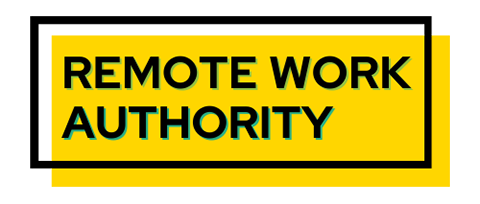When welcoming remote employees, onboarding should get them up to speed on tasks, company policies and culture, and performance expectations in an informative and welcoming way. The goal is to make them feel like an important part of the team.
In today’s ever-changing work environment, remote work is becoming increasingly popular. However, the challenge of onboarding remote employees should not be taken lightly. New remote employees may struggle to integrate into the company’s culture without proper guidance and support and feel disconnected from their colleagues.
This article discusses the best practices for onboarding remote employees, including tips and strategies to help companies successfully onboard and integrate remote employees into their teams.
Table of Contents
What Is The Importance Of Onboarding Employees, Especially If They Are Remote?
Successfully onboarding remote employees requires a different approach than in-person onboarding, and best practices must be established to ensure the process is successful.
Companies should establish a clear, concise communication plan, provide relevant and engaging training materials, and create opportunities for team bonding and relationship building. It is also essential to establish clear expectations and goals for remote employees and provide ongoing feedback and support.
The best practices for onboarding carry over to managing remote or distributed teams.
Clarifying Job Expectations
Onboarding first-day employees, especially remote ones, is critical to set them up for success and ensure a positive experience. Effective onboarding programs help to integrate new employees into the company culture, clarify job expectations, and provide necessary training and resources.
Additionally, remote employees may feel isolated or disconnected from the company and their colleagues, making onboarding all the more important for establishing a sense of belonging and engagement. An effective onboarding experience increases team member retention, productivity, and satisfaction.
Post-Pandemic
In the wake of the pandemic, remote hiring has become a popular trend among companies. Remote employee onboarding is crucial to ensure new hires are productive and engaged from day one. To make the remote onboarding experience smooth and efficient, human resources (HR) departments and hiring managers must work together and be clear, concise, and organized.

How Does The Remote Onboarding Process Work?
Remote onboarding typically involves digital tools like video conferencing, online training materials, and virtual collaboration platforms like Slack. The process starts with sending new employees an offer letter and welcome packet, then setting up their equipment and providing them access to the necessary systems.
Orientation and training sessions are conducted virtually, and new employees are introduced to their colleagues and supervisors through video conferencing or messaging platforms. Regular check-ins and feedback sessions are essential for a successful remote onboarding process.
How Do You Effectively Onboard Remote Employees?
When onboarding remote workers, companies should establish a clear communication plan, including virtual meetings and messaging platforms to keep remote employees connected and informed. Providing comprehensive training materials and resources tailored to the new job and remote work environment is crucial.
“Effective remote onboarding centers on one thing: creating psychological safety. Offer to set up virtual coffee chats with key stakeholders, provide plenty of documentation on expectations for the first several weeks, and leave copious time for new hires to ingest and process information. These three actions create trust, which becomes the foundation for a great working relationship.”
Darren Murph – VP Workplace Design & Remote Work
Create opportunities for virtual team bonding and relationship building to foster a sense of belonging and connection. Feedback and support should be provided, so remote employees have the tools and resources to succeed.

What Are The Four Cs Of Onboarding?
The four Cs of onboarding are Compliance, Clarification, Culture, and Connections.
- Compliance means new hires understand and comply with legal and regulatory requirements.
- Clarification involves setting clear expectations and goals for the team member’s role and responsibilities.
- Culture entails introducing new hires to the company’s values, mission, and culture.
- Finally, connection fosters relationships and a sense of belonging among new hires and their colleagues to promote engagement and retention.
Together, these four Cs help to create an effective onboarding program for new employees.
The Fifth C Of Onboarding
There is no widely accepted or recognized fifth “C” of onboarding in the HR or management field. However, some organizations include additional elements or categories in their virtual onboarding programs, such as content, check-back, coaching, or career development. Still, they are not generally considered a fifth “C.”
What Are The Best Practices For Onboarding New Employees?
Best practices for the day one onboarding of employees working from home should include a comprehensive program incorporating the four Cs. The program should be personalized to the individual team member and have clear communication, relevant training, and ongoing feedback and support.
Companies should also prioritize relationship building and engagement by creating opportunities for socialization and team bonding and demonstrating a commitment to the team member’s growth and development within the organization.
During onboarding, HR and hiring managers should follow up with remote hires in real-time to ensure they are comfortable with the technology and understand their responsibilities. Asynchronous communication is also used to share resources and training materials.
6 Tips For Onboarding Remote Employees
- Establish a clear onboarding plan with a detailed schedule and expectations for the new team member and their team.
- Ensure the new employee has all the necessary equipment and access to relevant systems before their start date.
- Use virtual collaboration tools to facilitate introductions and remote team-building activities and provide opportunities for social interaction.
- Provide clear guidance on the company’s culture, values, and expectations for remote work.
- Regularly check in with the new employee using a one-on-one video call to ensure they have the support and resources to succeed.
- Provide ongoing training and development opportunities to help remote employees grow and develop their skills.

Further Aspects Of Remote Onboarding
Keep The Process Organized And Planned
The virtual onboarding process should be organized and planned out in advance. Human Resources can create an employee onboarding checklist and a template to help remote hires navigate through their first week. They can also schedule one-on-one meetings with new hires via a video conferencing tool like Zoom to introduce themselves, answer questions, and discuss milestones.
Establishing a buddy system where remote team members are paired with a seasoned employee who can mentor and guide them through the workflow is also important. Creating a dedicated Slack channel for new hires to communicate with HR and the team helps them feel more connected to the company.
Make The Experience More Engaging
To make the remote onboarding experience more engaging, companies can send out company swag or offer a stipend for remote employees to personalize their workspace. Providing access to an employee handbook and sharing company culture on social media also helps new hires understand the company’s values and goals.
Regular Follow-Ups
Finally, scheduling regular follow-ups with new hires in the first few weeks is important to check in on their progress and address any concerns they may have. If possible, offering an on-site visit or team-building activity helps remote hires feel more connected to the team and the company culture.
In conclusion, remote employee onboarding requires a structured and intentional approach. By following these best practices, HR departments and hiring managers ensure remote hires feel welcomed, supported, and engaged throughout their onboarding journey.


